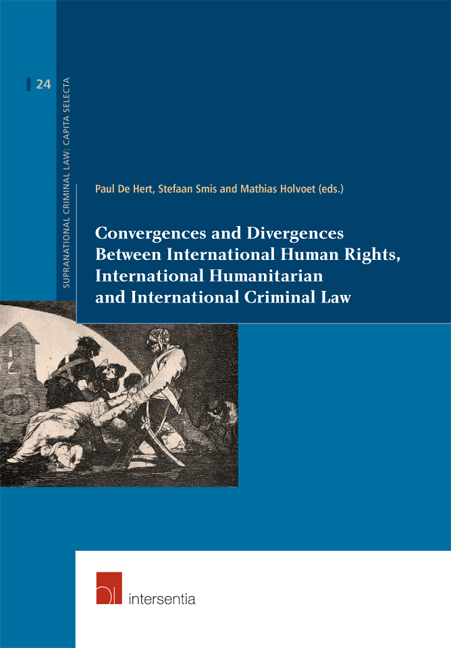Book contents
- Frontmatter
- Foreword
- Preface
- Contents
- About the Contributors
- Part I Convergences and Divergences between International Human Rights Law and International Criminal Law Stricto Sensu
- Part II Convergences and Divergences between International Human Rights Law and Transnational Criminal Law
- Part III Convergences and Divergences between International Human Rights Law and International Humanitarian Law
- Conclusion
- Index
- About the Editors
Preface
Published online by Cambridge University Press: 11 October 2018
- Frontmatter
- Foreword
- Preface
- Contents
- About the Contributors
- Part I Convergences and Divergences between International Human Rights Law and International Criminal Law Stricto Sensu
- Part II Convergences and Divergences between International Human Rights Law and Transnational Criminal Law
- Part III Convergences and Divergences between International Human Rights Law and International Humanitarian Law
- Conclusion
- Index
- About the Editors
Summary
As already noted by Professor Brems in the foreword, this volume compiles a selection of papers initially presented in a track of the ‘The Global Challenge of Human Rights Integration’ flagship conference, which took place in Ghent in December 2015. More specifically, the track was entitled ‘Convergence and Divergence between International Human Rights Law and Other Branches of International Law’. The call for papers required applicants to address the following questions: how does international human rights law (IHRL) relate to and interact with other bodies of international law? How does IHRL have a guiding, gap-filling, expanding or narrowing effect on such other bodies of law? In return, is IHRL undergoing similar effects from other branches of international law? The selected papers explored convergences and divergences between IHRL and the various sub-branches of international law such as international criminal law (ICL), international humanitarian law (IHL), international refugee law, international responsibility law, international economic law and international environmental law. In order to give the volume a focused theme, the editors chose to select only those papers dealing with convergences and divergences between IHRL, IHL and ICL.
IHRL, IHL and ICL are rooted in a similar ideal: respect for the autonomy and integrity of individuals and protecting individuals from misused State authority. They have been represented as circles or rings, each of which overlaps with the other two. Indeed, human rights treaties, such as the Torture Convention, and humanitarian law conventions, such as the four Geneva Conventions, contain provisions regulating individual criminal responsibility. Conversely, ICL instruments, such as the Rome Statute of the International Criminal Court (ICC), contain provisions that draw upon both IHL and IHRL. Notwithstanding these significant overlaps and synergies, there is a far from perfect congruence between IHRL, IHL and ICL. What is more, their relationship and interaction have been marked by friction and have, at times, resulted in collisions and impairments of the respective normativity and rationale underlying the three bodies of law. For instance, as described by Darryl Robinson in his piece ‘The Identity Crisis of International Criminal Law’, interpretive, substantive, structural and ideological assumptions of IHRL and IHL have seeped into ICL jurisprudence and scholarship. According to Robinson, this has distorted the methods of reasoning of ICL and undermined compliance with the fundamental principles of ICL.
- Type
- Chapter
- Information
- Convergences and Divergences Between International Human Rights, International Humanitarian and International Criminal Law , pp. vii - xPublisher: IntersentiaPrint publication year: 2018

